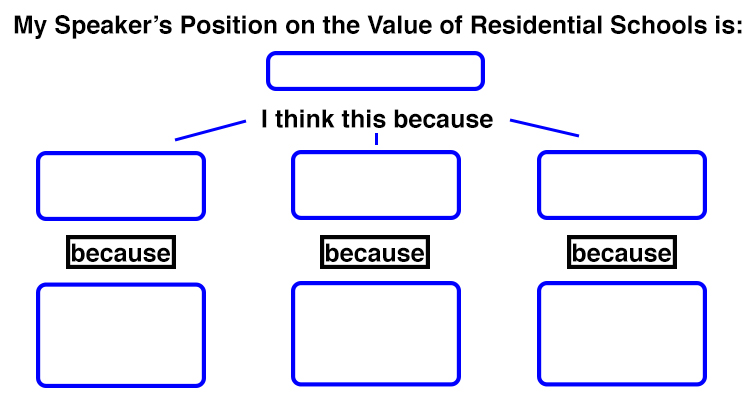Activity 1
Briefly review the effects differing worldviews had on the Aztec and Spanish Empires. What do you know about contact between colonializing and indigenous cultures? Why did the Spanish want to go to the “New World?” Why was it so important that they erase Aztec culture when they got there? What kind of strategies were used when they got there to attack the Aztec culture?
Pose the question to students – “To what extent does control of educational institutions control culture?”
Have students create a line across the front of the room to express their opinion. One side of the line would argue that changes in education does not effect changes in culture, and one side would argue that changes in education is the sole reason for changes in culture.
Remind students that violence, technology, and disease also ended the Aztec culture.
Activity 2
Introduce or reintroduce students to the concept of residential schools in Canada. Show students these two videos.
http://www.youtube.com/watch?v=s_V4d7sXoqU”>Canadian Residential School Propaganda Video 1955
http://www.youtube.com/watch?v=fr7bcO0IYbE”>Residential schools leave a deadly legacy
Have students answer the following questions related to the videos:
What purpose did the creator of the video have in making it?
Who likely created it?
What information are they trying to convey to viewers?
What concepts do we need to know to fully understand the videos?
Activity 3
Divide students into four groups. Provide each group with one of the following descriptions and sound recordings.
1. First Nations Canadian who did not go to a residential school.
a. Interviewee #1
2. First Nations Canadian who did go to a residential school.
a. Interviewee #2
3. First Nations Canadian whose parents practiced Catholicism and Anglicanism.
a. Interviewee #3
4. A priest, Father Lavernce discussing First Nations participation in religion.
a. Audiograph recording 6-Father Lavernce, Shot on Both Sides, Bruised Head, and Mrs. Shot on Both Sides
As students listen to their assigned audio recording, have them fill out a position chart giving examples from the audio of why their speaker would have the view of residential schools that they have. Have students use what they know about worldviews to help infer their speaker’s position.
Activity 4
Students may use their position chart to create a monologue (piece of theatre with only one person talking.) In this monologue, they will be representing the character they have created a position on residential schools for. In the monologue they can be talking to whoever they wish, or be in any situation they wish, but they must be expressing their views on residential schools and European culture in Canada. Encourage students to avoid having their character stand up and lecture. Characters could be talking to their mother, wife, child. They could be on their death bed, at a wedding, etc.
If students finish writing early, encourage them to memorize their piece.
Present monologues.
Activity 5
Ask students why it is important to understand multiple perspectives surrounding the same topic.
Painter de Grandmaison chose to paint Aboriginals in the way they really appeared, rather than have them dress up or act a certain way to fit what Europeans assumed as a correct stereotype. Ask students why he did this. (To avoid bias, to avoid hearing the position of others on how they should look etc.) Discuss how this would affect what we know about First Nations culture today. Why is it important to preserve these materials?
Assessment:
Consider assessing student speaker position charts for validity and an in depth understanding of perspective. Consider assessing student monologues through the use of a rubric to assess presentation skills and content.
